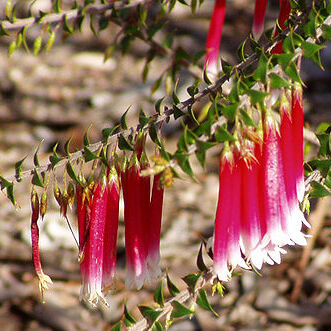Fls 5-merous, axillary, solitary, sessile or shortly peduncled. Bracts ∞, imbricate, investing peduncle. Staminal filaments short, inserted on corolla-tube; anthers not or hardly exserted. Disk hypog., us. of 5 free scales. Ovules ∞, attached to a central placenta; capsule loculicidally dehiscent, seeds ∞. Mostly erect rather rigid shrubs with subsessile crowded lvs. Some 50 mostly Australian spp., with a few in Tasmania, N.Z., New Caledonia. The N.Z. sp. endemic.

